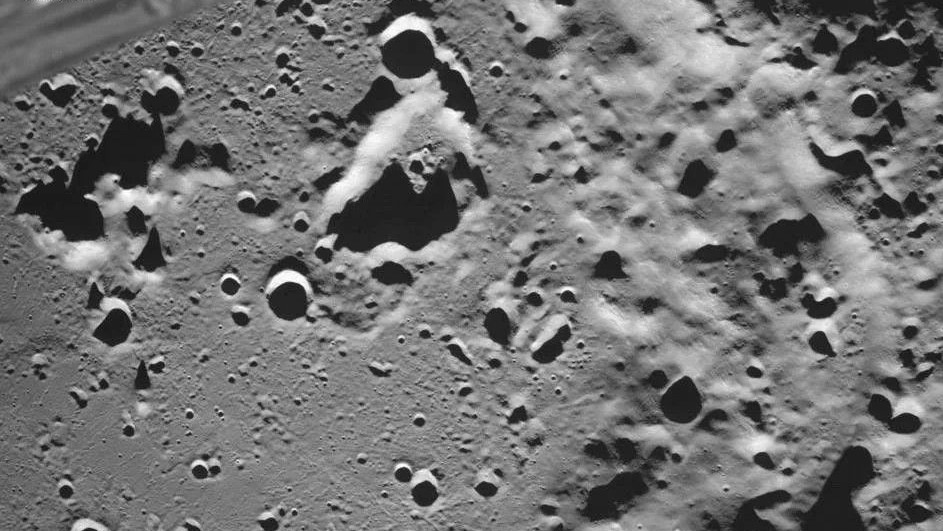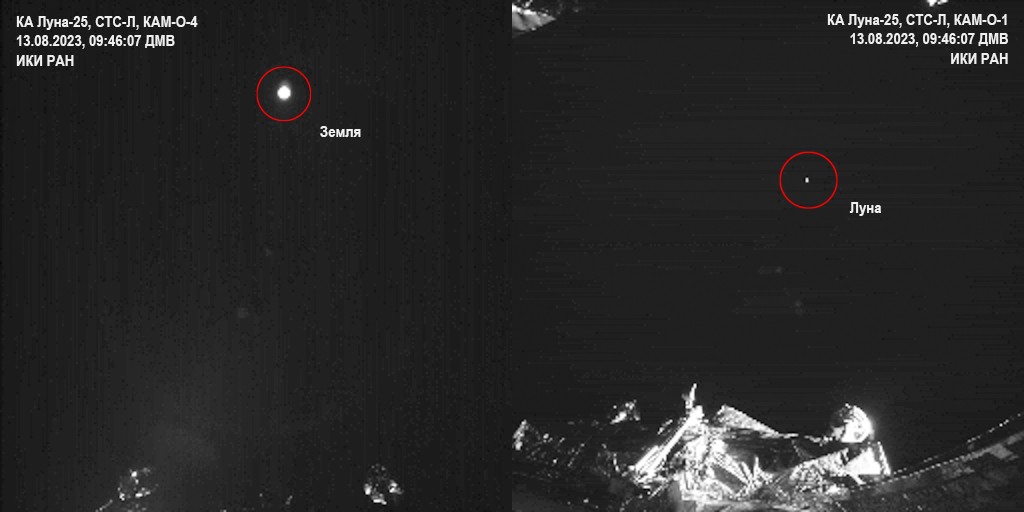Russia's Luna-25 moon lander snaps 1st photo of lunar surface

Russia's first moon mission in nearly 50 years keeps notching milestones.
The Luna-25 lander has snapped its first detailed photo of the moon's surface, the Russian space agency Roscosmos announced today (Aug. 17) in a Telegram post.
"Pictured is the south polar crater Zeeman on the far side of the moon," Roscosmos officials wrote in the post, which also shared the photo. "The coordinates of the center of the crater correspond to 75 degrees south latitude and 135 degrees west longitude." (The post is in Russian; translation by Google.)
Related: Russia launches Luna-25 moon lander, its 1st lunar probe in 47 years
Luna-25 launched on Aug. 10, marking the start of a new era of Russian space exploration. The last Russian moon probe to take flight was Luna-24 in 1976, when the nation was still part of the Soviet Union.
Luna-25 snapped its first in-space photos on Sunday (Aug. 13), capturing selfies with the distant moon and Earth in the background. That milestone was soon followed by an even bigger one — reaching lunar orbit, a success that Roscosmos announced yesterday (Aug. 16).
Luna-25 remains in lunar orbit, but it won't be there for long. The probe is scheduled to make a touchdown try in the coming days, perhaps as soon as Aug. 21.
Breaking space news, the latest updates on rocket launches, skywatching events and more!
The lander will aim for a patch of gray dirt near the the moon's south pole, an area thought to be rich in water ice. If Luna-25 sticks the landing, the spacecraft will hunt for water ice and perform a variety of other investigations during a surface mission expected to last one Earth year.
Russia isn't the only nation with the south pole in its sights. India's Chandrayaan 3 lander aims to touch down in the area as well, on Aug. 23 or Aug. 24. And NASA is targeting the lunar south pole over the longer haul: The agency plans to land the crewed Artemis 3 mission there in late 2025 or 2026, a prelude to the construction of one or more bases in the region.

Michael Wall is a Senior Space Writer with Space.com and joined the team in 2010. He primarily covers exoplanets, spaceflight and military space, but has been known to dabble in the space art beat. His book about the search for alien life, "Out There," was published on Nov. 13, 2018. Before becoming a science writer, Michael worked as a herpetologist and wildlife biologist. He has a Ph.D. in evolutionary biology from the University of Sydney, Australia, a bachelor's degree from the University of Arizona, and a graduate certificate in science writing from the University of California, Santa Cruz. To find out what his latest project is, you can follow Michael on Twitter.


